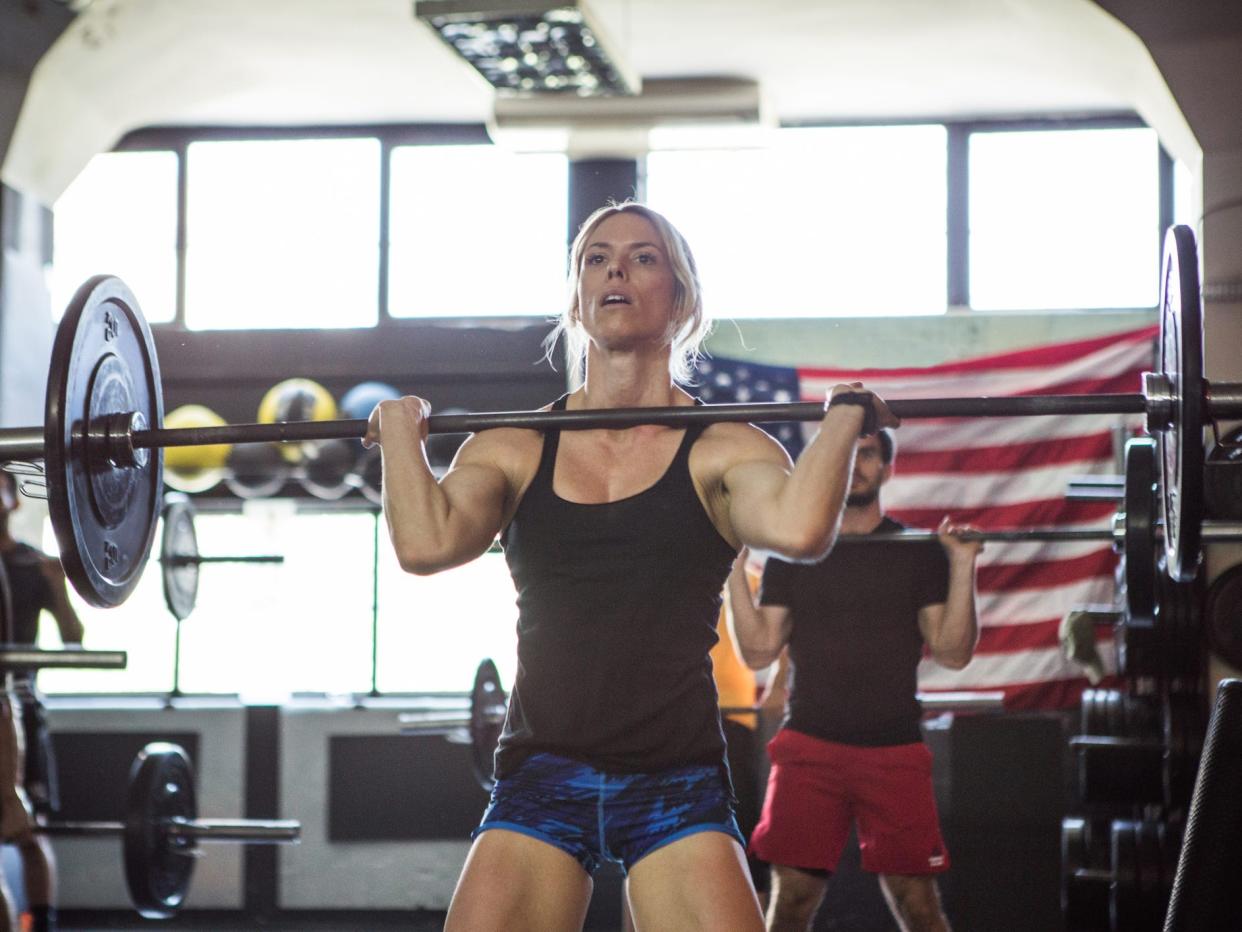How to choose between barbells, dumbbells and kettlebells for your muscle-building workouts

Training with weights can help you build strength and muscle, regardless of what equipment you use.
But dumbbells, barbells and kettlebells have unique advantages and drawbacks.
Picking the right weight type for your fitness goals can help you progress more efficiently.
Choosing the right tool at the gym can help you build strength and muscle more effectively. Dumbbells, barbells, and kettlebells all have unique advantages and drawbacks for fitness, according to experts.
Any type of weight can get you stronger, so you don't have to overthink it, but understanding all three can help you decide what works best for your goals and preferences, according to Ben Foster, head coach and founder of the People's Athletic Club.
"You can get plenty fit with any equipment. It depends on what resonates the most and what you enjoy," he told Insider. "The best exercise is the one you do consistently."
Dumbbells are great for beginners, but limited in weight and stability
The humble dumbbell is the most user-friendly, accessible weight in the gym.
"Dumbbells are best for beginners because you can do so much with them," Foster said. They're common, in a range of size, and don't require special technique.
For experienced athletes, dumbbells can help isolate specific muscle groups to maximize hypertrophy (muscle growth), and are great for unilateral (single side) strength work.
The major drawback of dumbbells is that you can't lift as much overall — which is fine for small-muscle exercises like curls, but suboptimal for squats.
"They only get so heavy, and you're limited by your grip strength," Foster said.
Barbells are ideal for optimizing strength, but less accessible
For maximizing full body strength, barbells are king, trainers say.
"They're best for getting strong and lifting heavy, easier to progressively overload and can add a lot of weight," Miriam Fried, NYC-based personal trainer and founder of MF Strong, told Insider.
You can lift more with a barbell than other types of weight because it's evenly distributed across both sides, so you're less limited by stability or grip strength.
The downside is that barbells and accessories (plates and a squat rack) are more expensive and take more space than other weights.
You'll likely have to go to a gym, may to have to wait to use the equipment you want, and could deal with "gymtimidation" or anxiety about working out, in the center of the gym where most barbells are located, Fried said.
While standard barbells weigh in at 45 pounds, requiring some baseline strength and mobility to use, a good coach can provide a lighter training barbell for newbies. Beginners can not only safely learn barbell exercise, they may be better at it than they expect.
"People are generally surprised by how able they are once they get a bar in their hands," Foster said.
Practice key movements like the deadlift slowly and with light weight at first.
"Start by taking a lot of time to control the eccentric, the way down. It gives you a lot of feedback on the position and ability to feel the muscles that are working," he said.
Kettlebells require more technique, but train full-body power and stamina
Kettlebells have one of the highest learning curves of all weight types, due to the weight distribution below the handle. But the odd shape also makes kettlebells exceptional for training explosive exercises and combinations. Kettlebell-specific exercises, like swings, can help you develop power and stamina more effectively than other weights.
"If someone only has access to a kettlebell, they can very easily get a full-body workout, but its unique value is athletic development," Foster said.
To get comfortable with handling a kettlebell, find a good coach and start with basic movements like the hip hinge, squat, press, and row.
Work up to dynamic exercises like kettlebell swings, cleans, and snatches to tap into more power and intensity.
Read the original article on Insider
